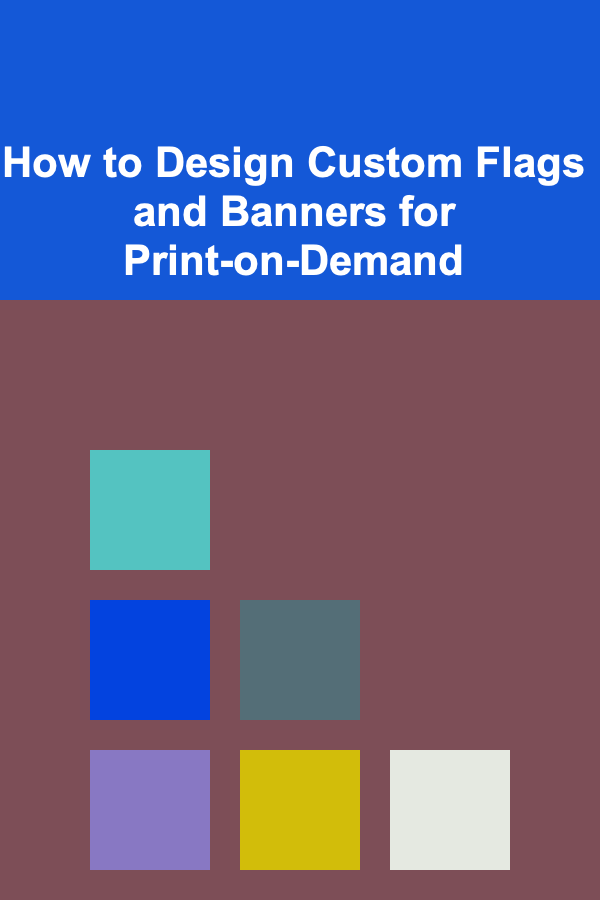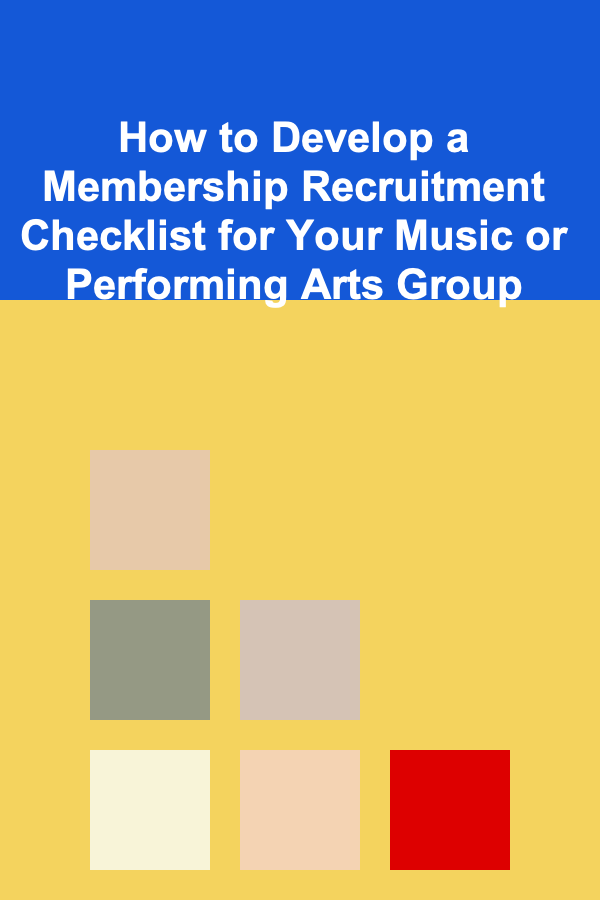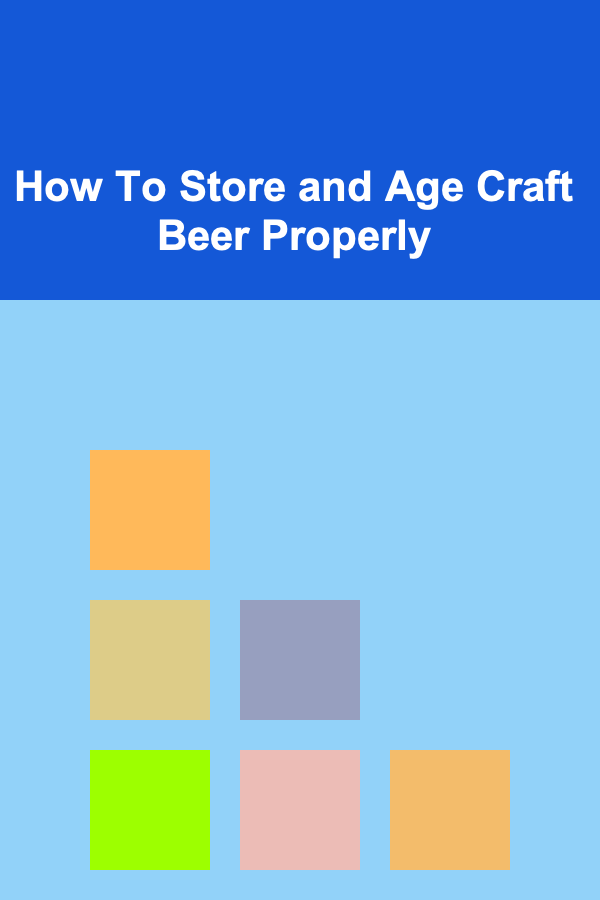
How to Design Custom Flags and Banners for Print-on-Demand
ebook include PDF & Audio bundle (Micro Guide)
$12.99$5.99
Limited Time Offer! Order within the next:

Designing custom flags and banners for print-on-demand is a creative process that involves combining visual aesthetics with practical considerations, ensuring that the designs not only look great but also meet the specifications of the print-on-demand service. Whether you're a business owner looking to market a brand, an event organizer preparing for a grand opening, or an individual with a unique idea, understanding the key principles of designing flags and banners for print-on-demand can make a significant difference in the final product.
This article will delve into the various aspects of designing flags and banners, including the tools, design principles, materials, and considerations for print-on-demand. The goal is to provide a comprehensive guide that helps you create stunning, high-quality designs that work well both digitally and in the physical world.
Understanding Flags and Banners for Print-on-Demand
What is Print-on-Demand?
Print-on-demand (POD) refers to a business model where products like flags and banners are only printed once an order is received, allowing for custom designs without the need for upfront inventory. This business model has revolutionized the way individuals and businesses approach custom products. With POD, designers can create flags and banners tailored to their client's or their own preferences, all while avoiding the cost of mass production and storage.
Key Differences Between Flags and Banners
While the terms "flag" and "banner" are often used interchangeably, there are subtle differences that can influence the design process:
- Flags are typically designed to be flown on a pole and are often more flag-like in shape, such as rectangular or square. Flags usually represent entities like countries, companies, or causes.
- Banners are more flexible in shape and size and are often used for advertising purposes, promotions, or events. Banners may hang from a wall, a building, or a stand, and are usually larger than flags.
Print-on-Demand Flag and Banner Types
The first step in designing flags and banners is to choose the right type for your needs. Different print-on-demand services may offer various types of flags and banners, such as:
- Feather Flags: Tall and narrow flags that resemble feathers, often used for outdoor advertising or events.
- Rectangle Flags: A classic flag shape, commonly used for representing national symbols or businesses.
- Banner Flags: Designed to hang from a horizontal bar, these flags are often used in trade shows, parades, or advertising events.
- Vinyl Banners: A flexible option made from vinyl material, ideal for large-scale promotions or events. These banners are usually printed on a single side.
- Mesh Banners: Similar to vinyl banners but made from a mesh fabric, these are ideal for outdoor use as they allow wind to pass through, preventing the banner from getting damaged.
Materials and Finishes
Before starting the design process, it's important to understand the materials available for printing. These materials can influence the design choices you make, such as color usage, typography, and layout. Common materials include:
- Polyester: Durable and lightweight, often used for both indoor and outdoor flags.
- Vinyl: A heavy-duty material, ideal for long-lasting banners, especially for outdoor use.
- Fabric: Soft and versatile, often used for indoor banners or events where a luxurious or professional appearance is desired.
Additionally, print-on-demand services may offer various finishes, such as matte, gloss, or satin. The finish can change the appearance of the final design and should be considered when designing.
Design Principles for Custom Flags and Banners
Designing custom flags and banners requires careful thought. Unlike digital design, flags and banners are physical objects that need to be eye-catching and legible from a distance. Here are some key design principles that should be kept in mind:
2.1. Simplicity and Clarity
Flags and banners are often viewed from a distance, meaning that complex designs may not be easily visible or recognizable. For this reason, it's important to prioritize simplicity in your design.
- Limit the number of elements: Stick to a few core visual elements that represent your message clearly.
- Use bold, readable fonts: Text should be legible from afar. Avoid overly decorative fonts that may look beautiful up close but are hard to read from a distance.
- Ensure high contrast: High contrast between the background and text or images helps ensure visibility. For example, white text on a dark background or black text on a bright background can stand out well.
2.2. Proportions and Dimensions
Flags and banners come in various sizes and shapes. The design should be scalable and fit within the given dimensions. This means considering how the design elements will look when enlarged or shrunk. Here are a few key factors to keep in mind:
- Aspect ratio: Flags and banners have standard aspect ratios. For example, flags often have a 2:3 ratio, and banners may come in 3:1 or 4:1 ratios. Be sure to design within the appropriate ratio to avoid distorting your visuals.
- Size matters: Consider the intended viewing distance when designing. Larger text and symbols are needed for banners or flags that will be viewed from far away.
- Margins and bleed areas: Leave sufficient margins around your design and account for bleed areas in the final design. The bleed ensures that your design runs all the way to the edges without leaving unwanted white space.
2.3. Colors and Contrast
Colors play a vital role in flag and banner design, not just for aesthetic reasons, but also for visibility and recognition.
- Contrast: Use high-contrast colors that can be easily distinguished from a distance. Bright colors like red, blue, and yellow tend to stand out well.
- Brand consistency: If you're designing a banner for a business or an event, make sure to use brand colors to ensure consistency across your marketing materials.
- Psychology of colors: Different colors evoke different emotions and responses. For instance, red may evoke urgency or excitement, while blue conveys trust and professionalism. Consider the psychological impact of your color choices based on the message you want to convey.
2.4. Legibility and Readability
Whether your flag or banner includes a slogan, logo, or call to action, legibility and readability are crucial.
- Use large fonts for text: Choose fonts that are simple, large, and bold. Sans-serif fonts, like Arial or Helvetica, are often easier to read from a distance.
- Hierarchy of information: If you're including multiple pieces of text, establish a clear hierarchy. The most important information (like a logo or brand name) should stand out the most, followed by secondary text.
- Spacing and alignment: Pay attention to the alignment of text and graphics. Proper spacing ensures that the design looks clean and organized, improving the overall readability.
2.5. Typography
Typography is one of the most important aspects of any design. The wrong typeface can significantly detract from the effectiveness of your flag or banner.
- Keep it minimal: Use one or two fonts at most. Overloading a design with too many fonts can make it cluttered and hard to read.
- Font weight and size: Make sure the text is bold enough to be seen from a distance. The weight of the font can also influence how readable it is under various lighting conditions.
- Avoid cursive fonts for large text: While cursive fonts are beautiful, they can be difficult to read from afar, especially when used for large text like event names or slogans.
2.6. Image Quality
If your design incorporates logos or images, ensure they are high quality and suitable for large-scale printing.
- Resolution: Use images with high resolution (at least 300 DPI) to ensure they don't appear pixelated when printed in large formats.
- Vector graphics: Whenever possible, use vector-based images (e.g., .AI, .SVG files) because they can be resized without losing quality. This is particularly important for logos or any graphic elements that need to scale.
- Transparent backgrounds: For logos or icons, ensure that the background is transparent so that the design can be seamlessly integrated with the flag or banner's background color.
Tools for Designing Custom Flags and Banners
There are various tools available that can help you design flags and banners. From professional-grade design software to user-friendly online platforms, here's a look at some of the top tools to create custom flags and banners:
3.1. Adobe Illustrator
Adobe Illustrator is the industry-standard vector graphics editor, ideal for designing custom flags and banners. With its vast array of tools, Illustrator allows for precise control over shapes, text, and images.
- Advantages: Precise vector editing, scalable designs, professional features.
- Best for: Professional designers or anyone looking for a powerful tool to create detailed designs.
3.2. Canva
Canva is a web-based design tool that's great for beginners and non-designers. It provides a wide variety of pre-made templates for flags, banners, and other promotional materials.
- Advantages: Easy to use, drag-and-drop interface, a wide selection of templates.
- Best for: Small business owners, individuals creating designs without prior graphic design experience.
3.3. Inkscape
Inkscape is a free, open-source vector graphics editor that offers many of the features found in Illustrator. It's a great option for those on a budget who need vector design software.
- Advantages: Free, powerful vector editing features, highly customizable.
- Best for: Designers on a budget or those looking for a free alternative to Illustrator.
3.4. Fotor
Fotor is an online photo editor that allows you to design banners and flags using a simple drag-and-drop interface. It's especially useful for creating banners with images and text.
- Advantages: User-friendly, quick and easy to use, no installation required.
- Best for: Quick, simple designs with less emphasis on advanced graphic manipulation.
3.5. Affinity Designer
Affinity Designer is another professional vector graphics design tool that is more affordable than Illustrator while still offering many high-end features. It's a great option for anyone looking to produce high-quality designs without the steep learning curve of Illustrator.
- Advantages: Affordable, professional-grade vector editing tools, great for both print and digital designs.
- Best for: Designers who want a cost-effective alternative to Adobe Illustrator.
Final Considerations for Print-on-Demand Flags and Banners
After creating your design, you'll need to ensure that it meets the requirements of your print-on-demand service. Here are some final considerations before submitting your design:
4.1. File Format and Specifications
Different print-on-demand platforms may have different file format requirements. Most platforms will accept common file formats such as:
- AI (Adobe Illustrator)
- EPS
- PNG (for transparent backgrounds)
Check the specific print-on-demand service for their preferred file formats and resolution requirements.
4.2. Proofing Your Design
Before placing an order, always preview and proof your design. Many print-on-demand platforms provide a mockup or preview tool to show what the final product will look like. Make sure that the colors, text, and images are correctly aligned and scaled.
4.3. Testing the Design
If you're unsure how your design will look in real life, consider ordering a sample print before placing a large order. This gives you a chance to review the quality of the print and make adjustments if necessary.
Conclusion
Designing custom flags and banners for print-on-demand is a rewarding process that requires creativity, attention to detail, and a good understanding of design principles. By focusing on simplicity, clarity, color contrast, and readability, you can create effective designs that make a strong visual impact. The right tools, techniques, and careful planning will ensure that your custom flags and banners not only look great but also serve their intended purpose effectively.
With the growing demand for personalized products, mastering the art of flag and banner design opens up exciting opportunities for individuals and businesses alike. Whether you're promoting an event, representing a brand, or making a personal statement, designing your own custom flags and banners is a powerful way to express your message.

How to Develop a Membership Recruitment Checklist for Your Music or Performing Arts Group
Read More
How to Prevent Noise from Neighbors with Effective Soundproofing
Read More
How to Stage Your Home When It's Still Occupied
Read More
How To Store and Age Craft Beer Properly
Read More
How To Leverage User-Generated Content for POD Marketing
Read More
How to Explore Next-Generation Robotics for Healthcare
Read MoreOther Products

How to Develop a Membership Recruitment Checklist for Your Music or Performing Arts Group
Read More
How to Prevent Noise from Neighbors with Effective Soundproofing
Read More
How to Stage Your Home When It's Still Occupied
Read More
How To Store and Age Craft Beer Properly
Read More
How To Leverage User-Generated Content for POD Marketing
Read More